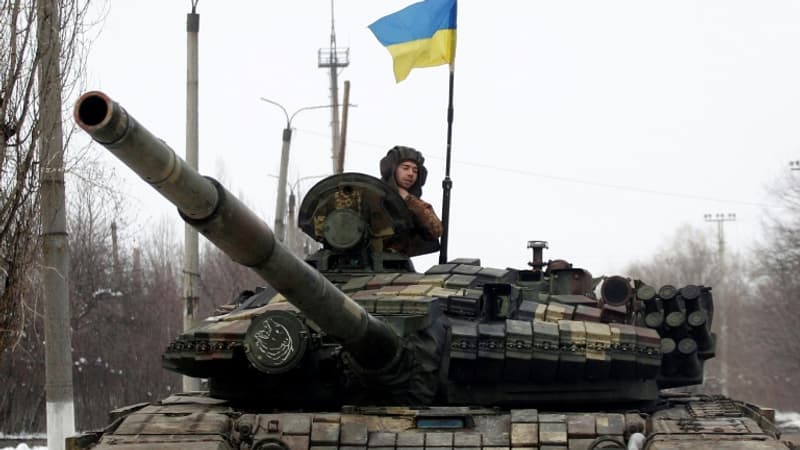The upcoming arrival in the Ukrainian theater of Western-made tanks and armored vehicles, including German Leopard 2 heavy tanks, challenges Kyiv to train its troops in the use and maintenance of a variety of equipment for some very complex ones.
Since the start of the Russian invasion nearly a year ago, kyiv’s European allies have already delivered close to 300 modernized Soviet tanks, but never Western-built heavy tanks, despite repeated requests from Ukraine.
The taboo that has been in place since the start of the war seems about to be broken: on Wednesday Poland said it was ready to deliver 14 Leopard 2s. This German model of assault tank, considered one of the most efficient in the world, is very extended. in Europe, thus guaranteeing access to spare parts and ammunition.
But Berlin has so far been reluctant to hand it over to Kyiv, fearing an escalation with Moscow. The British do not rule out supplying Ukraine with Challenger 2 tanks. New announcements could come on January 20, during the next meeting of Ukraine’s allies in Ramstein (Germany).
“Logistics Puzzle”
Last week, France, Germany, and the United States led the way by promising to send in armored or reconnaissance infantry: 40 German Marders, 50 American Bradleys, and French AMX-10 RCs. From a French source familiar with the matter, Paris could sell a total of forty of these mobile devices. Its handover “will take place within two months,” the French Ministry of the Armed Forces said Thursday night.
However, “giving away all this equipment is one thing, using it is another,” a US military source said. Since the start of the war, the Ukrainians have undoubtedly shown a remarkable ability to integrate the onslaught of various equipment sent to them, experts agree. And when it comes to heavy armor, the Ukrainian army is not starting from scratch: by February 24 it had a fleet of nearly 900 Soviet-made tanks.
Despite everything, “Soviet tanks are very rustic, there is less electronics on board. Given the diversity of promised Western tanks and armored vehicles, it could be a logistical headache for them,” warns a French cavalry officer.
The Leopard 2, like the French Leclerc or American Abrams, fires 120mm shells. The British Challenger 2, on the other hand, is equipped with a 120mm rifled gun, which requires specific ammunition. As for the French AMX 10 RC, mounted on wheels and not on tracks, it is less complex to maintain than a tank but uses 105mm ammunition.
complex maintenance
However, the high intensity of the fighting between the Ukrainians and the Russians makes it crucial to maintain the equipment that has been put to the test. Western tanks, destined for the front line, would not escape the rule.
But “Ukraine is in a state of general mobilization, it has a considerable reserve of manpower. And they have the internal structures and the devices to assimilate all this various equipment,” argues Léo Péria-Peigné, a weapons expert at the French Institute of International matters. International Relations (IFRI).
If lighter damage is traditionally repaired by mechanics deployed near the front line, heavier maintenance operations must be carried out in the rear.
To help the Ukrainians manage Western equipment, the allies have already started efforts in terms of “operational maintenance,” a term that designates maintenance in military jargon.
For example, the Franco-German KNDS group (combining the German KMW and the French Nexter) opened a maintenance center in Slovakia in November to repair French ground equipment such as Caesar guns and Germans deployed in Ukraine: Caesar guns and PzH 2000 vehicles. Gepard anti-aircraft armored vehicles or MARS II multiple rocket launchers.
However, it is crucial that the Westerners send their tanks and armored vehicles in quantity and not in drops, otherwise they will be counterproductive, warns Léo Péria-Peigné.
“The main battle tank is the most complex military vehicle in terms of ground maintenance,” he comments. Thus, “the shipment of 10 Challenger 2 tanks from the United Kingdom would be a gift of poison. It would require mobilizing an entire training and maintenance chain for a limited availability rate and therefore a minimal effect on the ground”, knowing that more than a third of the fleet of this type of equipment is traditionally immobilized for maintenance, warns the investigator.
Source: BFM TV


